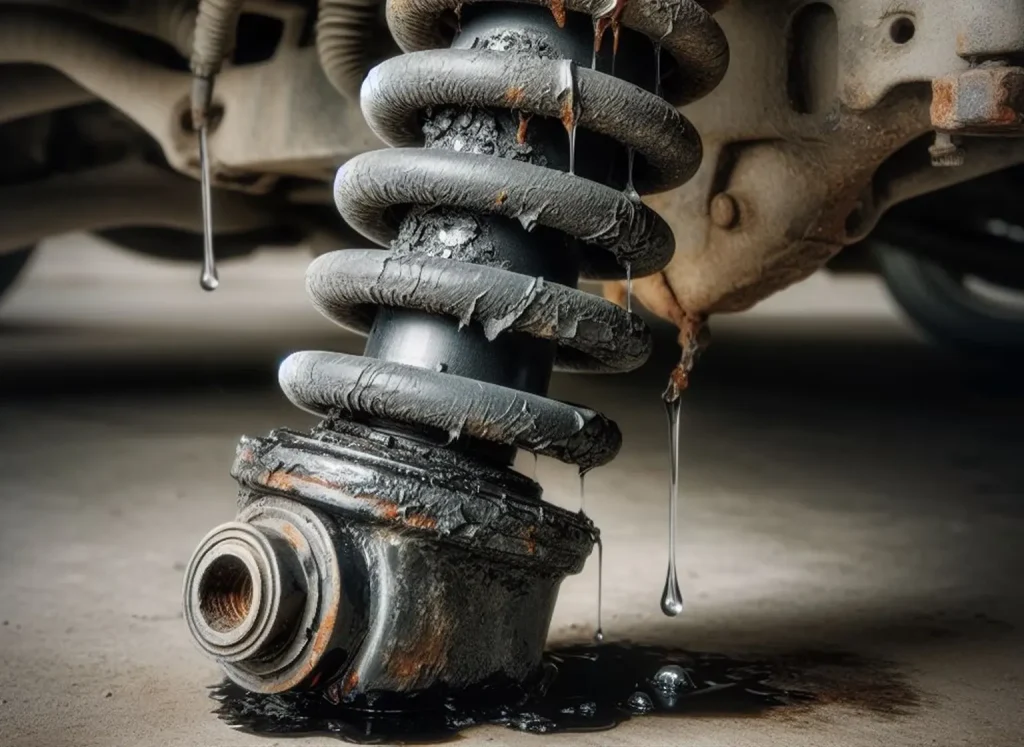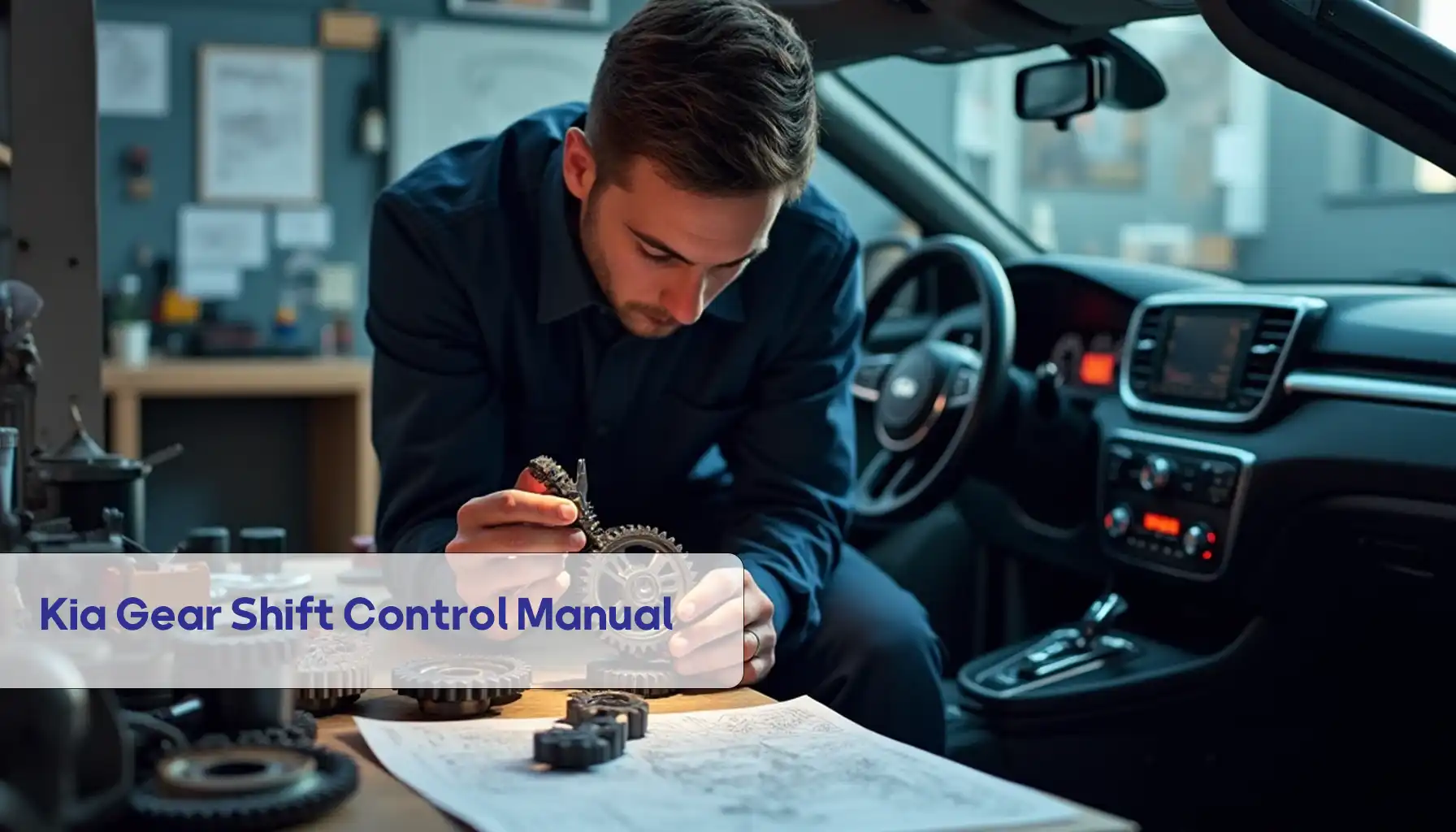As we said last time in the previous blog, Those trusty front shock absorbers are essential in keeping your ride smooth and your control on point. But when they start to show their age, it’s a clear sign that you need to take action to replace worn front shock absorber and to maintain your vehicle’s performance and safety.

Let’s Talk about these Actions in detail.
How to Know if Shock Absorbers Are Worn?
To answer this question and recognize worn front shock absorber, first, you must look at the below table to review the signs of damaged shock absorbers!
| Sign | Description | Danger |
| Vibration during ride | worn front shock absorber feels like excessive shaking or bouncing, especially after hitting bumps. The car doesn’t settle quickly after bumps. | Decreased handling and control, especially at higher speeds. Increased wear on other suspension components. |
| Leaking fluid | Visible oil on the outer surface of the shock absorber. | Inoperative shock absorber. Reduced stopping power and handling. |
| Uneven tire wear | worn front shock absorber are cupped, scalloped, or feathered wear on tire tread. This indicates the tire isn’t making complete contact with the road. | Reduced tire lifespan, poorer handling, and increased risk of hydroplaning. |
| Nosedive during braking | The car dips significantly forward when braking hard. | Increased stopping distances and potential loss of steering control. |
| Car rocking during cornering or high winds | Excessive swaying or leaning when turning or driving in strong winds. | Reduced handling and increased risk of rollover. |
| Longer braking distances | The car takes noticeably longer to come to a complete stop. | Significant safety hazards, especially in emergencies. |
| Strange noises from the suspension | Clunking, banging, or squeaking sounds when going over bumps or turning. | Potential damage to other suspension components. |

After reviewing all the signs, it’s time to talk about action:
Checking Visually:
Check for leaks by wiping the shock absorber down and vehicle’s chassis parts in front side of it with a clean towel. Seen oil on the outside? That’s a sign of a leaking worn front shock absorber. Make sure there are no broken parts: Shock absorber bodies and mounting points should be checked for dents, fractures, and excessive corrosion.

Driving Test and Routine Inspections:
Is your automobile bouncy if it hits a bump in the road? It shouldn’t keep bouncing about because an old shock absorber won’t do its job.
Does the front of your vehicle dip much when you apply heavy braking pressure? If so, you may be nosediving because maybe you front shock absorbers should be replaced. This can be a sign of worn front shock absorber.

Garbled tires: Make that there is no cupping (uneven or scalloped tread wear) on your tires. This might be an indication of worn shocks preventing the tires from making enough contact with the road. When you’re driving in high gusts or around bends, does your vehicle wobble too much or seem unsteady? Signs of worn shocks impacting handling might manifest in this way.
Moving Forward:
DIY Check (Restricted Scope): A visual check can show you whether anything is wrong, but a skilled mechanic can usually tell you for sure. A bounce test and other inspections can be conducted to ascertain the efficacy of the shock absorbers.
See a Reliable Technician:
If you see any of the symptoms that might indicate worn shocks, it’s best to reach out to a reliable technician for assistance. After they find out what’s wrong, they might suggest fixes or alternatives.

Why Early Detection is Crucial: Improving handling and ride quality, preventing uneven tire wear, and protecting other suspension components are all benefits of swiftly replacing damaged shock absorbers. Additionally, it helps secure your safety.
More Advice:
For the recommended service intervals of your shock absorbers, consult your vehicle’s owner’s handbook. For optimal handling, it may be wise to replace the shock absorbers in pairs, one for the front and one for the back. You can maintain your vehicle safe and make sure the ride is smooth by following these procedures and doing anything when you think the shocks are worn.
Is it OK to Drive with Worn front Shock Absorbers?
The short answer to this question is, No, it is NOT OK to drive with worn front shock absorbers.
While your car might still function minimally with worn shocks, it creates a safety hazard. The table we discussed earlier outlines the dangers of each warning sign.

If you frequently find yourself navigating rough or uneven surfaces, worn front shock absorbers can be especially hazardous. Without properly functioning shocks, your vehicle’s traction can take a serious hit, making it more challenging to maintain control, especially during emergency maneuvers or sudden turns.
Don’t ignore those telltale signs of worn front shock absorbers. Addressing the issue promptly can help ensure a smoother, safer ride and extend the life of your tires and suspension components. After all, a little maintenance now can save you from a whole lot of trouble down the road.
Worn front Shock Absorbers and Traction on a Rough Road
Worn shock absorbers can significantly reduce a vehicle’s traction, especially on uneven surfaces. This loss of traction can affect the car’s handling, making it more challenging to control, particularly during emergency maneuvers.
A breakdown of how old shocks affect grip:
Reduced Tire Contact Patch: Outdated shock absorbers can’t control how the tires move up and down as well as they should. While this happens, the tires bounce around more, making less rubber constantly in contact with the road. The grip is lower when there is less touch.
Ineffective Damping: Shock dampers slow down the spring’s return to normal after it hits a bump. A tire’s ability to stay in contact with a bumpy road surface is affected by worn shock absorbers that cause the vehicle to bounce too much.
Reduced Steering Response: When the car’s shocks wear out and its traction drops, the steering becomes less sensitive. In rough terrain, this can make it hard to stay in control and make fast turns. How this applies to real life: Less effective tire-to-road touch and less traction can make it take longer to stop safely on a rough road if your shocks are worn out.

Hydroplaning Risk: Wheels with worn shock absorbers may find it harder to get rid of water when driving on flooded or wet roads. Such actions raise the chance of hydroplaning, a condition in which the tires lose all grip on the water and slide across it.
Maneuverability Problems: If you need to dodge an obstacle on a rough road or decide to change directions quickly, worn shocks can make it harder to control the car because the steering and handling will not respond as well. Driving on a rough road with worn-out shock absorbers greatly raises the risk of a crash.
The bottom line? Driving on worn shock absorbers can seriously amplify the risk of an accident, especially when navigating less-than-ideal road conditions. Don’t ignore those telltale signs – it’s better to be safe than sorry when it comes to your suspension system.



